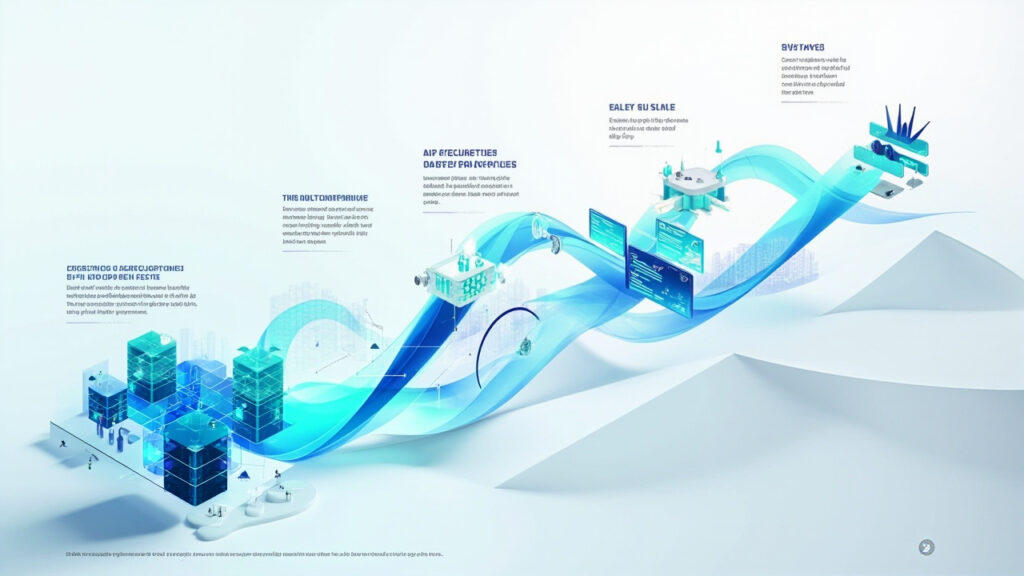In an era where technology evolves at breakneck speed, the software development industry is continually pushed to its limits. Developers and project managers face mounting pressures to deliver complex, high-quality software faster than ever before. This post explores the intricate web of high-level challenges in modern software development, from maintaining quality in accelerated development cycles to integrating cutting-edge technologies like artificial intelligence (AI).
Understanding these challenges is crucial for anyone involved in software projects—whether you’re a seasoned developer, a project manager, or a C-suite executive. We will delve into the pain points that teams encounter, the implications of these challenges, and the innovative solutions that are shaping the future of software development.
By the end of this article, you will gain a comprehensive understanding of the high-level hurdles in today’s software development landscape and discover how leveraging AI-powered tools like GenQE can transform these challenges into opportunities for growth and innovation.
The Complexity of Modern Software Projects

Software development is no longer just about writing code. It involves managing a complex ecosystem that includes diverse technologies, varied platforms, and multifaceted team dynamics. This section explores the root causes of complexity in modern software projects and their implications on delivery.
The Multifaceted Nature of Software Systems
Today’s software systems are often composed of multiple layers, including front-end interfaces, back-end servers, databases, and third-party services. Each layer not only adds to the complexity but also increases the potential for bugs and performance issues. The challenge for developers is to understand and manage these layers effectively, ensuring that they work harmoniously to deliver a robust product.
Integration Challenges
Integrating these diverse components smoothly is another herculean task. Teams must ensure that all parts of the software ecosystem communicate effectively without data loss or performance bottlenecks, which often requires extensive testing and quality assurance. For example, when a new payment gateway is integrated into an e-commerce platform, it must be meticulously tested to ensure that it does not disrupt the existing checkout flow or data security measures.
Cross-Platform Compatibility
With the proliferation of devices and operating systems, ensuring that software works seamlessly across all platforms is another critical challenge. This not only involves extensive testing but also a deep understanding of different environments. Developers must address varying screen sizes, operating system capabilities, and user interactions to ensure a consistent and engaging user experience.
Accelerated Development Cycles

The demand for faster time-to-market is at an all-time high. This section discusses how accelerated development cycles strain traditional development practices and how teams can adapt.
The Need for Speed
In the competitive landscape, companies are under immense pressure to launch products quickly to capture market share. This often leads to shortened development cycles that put additional stress on developers and quality assurance teams. For instance, a startup might rush to release a new feature to stay ahead of competitors, potentially compromising on thorough testing and quality.
Maintaining Quality Under Pressure
Rushing software through development without adequate testing can lead to poor quality products plagued with bugs. It’s crucial to find a balance between speed and quality, which is where AI-driven solutions like GenQE can play a transformative role by automating repetitive testing tasks, thus speeding up cycles without compromising on quality.
Adopting Agile and DevOps
To cope with these pressures, many organizations have turned to Agile methodologies and DevOps practices. These frameworks help streamline processes and improve collaboration but require significant changes in team dynamics and workflow management. They promote a culture of continuous integration and continuous delivery, but require teams to be highly adaptive and communicative.
Embracing New Technologies

As new technologies emerge, integrating them into existing systems or building new capabilities around them can be daunting. This section covers the challenges and strategies for adopting new technologies in software development.
Staying Ahead of the Curve
Technology evolves rapidly, and keeping up can be challenging. Developers must continuously learn new languages and frameworks, while companies must often overhaul their technology stacks to stay competitive. For example, the rise of blockchain technology has prompted many financial institutions to explore its potential for secure transactions and data storage.
Integration with Legacy Systems
Integrating new technologies with old ones is particularly challenging. Legacy systems often cannot be easily replaced due to cost or complexity, requiring developers to find innovative solutions to bridge the old with the new. This might involve using APIs or middleware to allow new applications to communicate with older systems.
Leveraging AI for Better Outcomes
AI is revolutionizing software development. Tools like GenQE utilize AI to enhance test automation, making the process more efficient and effective. This not only helps in integrating new technologies but also improves the overall quality and reliability of software. For instance, AI can be used to predict user behavior and test scenarios that are most likely to cause issues, allowing developers to focus their efforts where they are needed most.
Risk Management in Software Projects

Managing risk is paramount in software development. This section explores common risks and how to mitigate them effectively.
Identifying and Analyzing Risks
Risks in software projects can range from technical issues like security vulnerabilities to project management issues like scope creep. Early identification and thorough analysis are key to managing these risks. Teams must develop a risk management plan that includes risk identification, assessment, and mitigation strategies.
Implementing Effective Mitigation Strategies
Once risks are identified, implementing robust mitigation strategies is crucial. This might include everything from adopting secure coding practices to ensuring proper stakeholder communication throughout the project lifecycle. For example, regular code reviews and automated security testing can help prevent security risks.
The Role of AI in Risk Management
AI tools like GenQE can predict and mitigate risks by analyzing past data and predicting outcomes. This not only helps in proactive risk management but also reduces the manual effort involved in these processes. AI can detect patterns that may indicate potential risks, allowing teams to address them before they become critical issues.
Scaling Software Development

As businesses grow, scaling software development processes becomes a significant challenge. This section discusses strategies for scaling effectively without losing quality or agility.
Building Scalable Team Structures
Creating a team structure that can scale with the project’s needs is vital. This involves defining clear roles, responsibilities, and communication channels. As teams grow, maintaining a clear structure helps ensure that everyone understands their role and how it contributes to the project.
Leveraging Automation and AI
Automation is key to scaling software development. AI-driven tools like GenQE can automate complex testing tasks, allowing teams to handle larger projects without additional headcount. This not only helps manage the increased workload but also maintains the quality and consistency of the software.
Continuous Learning and Improvement
Scaling also requires continuous learning and improvement. Teams must be agile, ready to learn from past projects, and eager to adopt new tools and methodologies. Continuous improvement practices like retrospectives and post-mortems can help teams learn from their experiences and make necessary adjustments to their processes.
Conclusion: Embracing Change and Innovation

Navigating the high-level challenges of modern software development requires a blend of strategic planning, adoption of new technologies, and continuous improvement. Tools like GenQE offer a way to address these challenges by harnessing the power of AI to enhance testing efficiency and software quality.
As we move forward, embracing these innovative solutions will not only help in overcoming the challenges discussed but also drive growth and success in the rapidly evolving digital landscape. For those looking to enhance their development processes and product quality, exploring AI-powered tools like GenQE might just be the next step.
Explore how GenQE can revolutionize your software testing approach and help you navigate the complexities of modern software development. Take the leap towards more efficient, high-quality software delivery today!
Discover More Innovative Solutions
Want to learn more about the tools and technologies discussed in this article? Explore how these innovations can be tailored to your specific needs and workflow requirements.
Our team of experts is available to answer your questions and provide personalized insights into how modern solutions like GenQE can address your specific challenges.